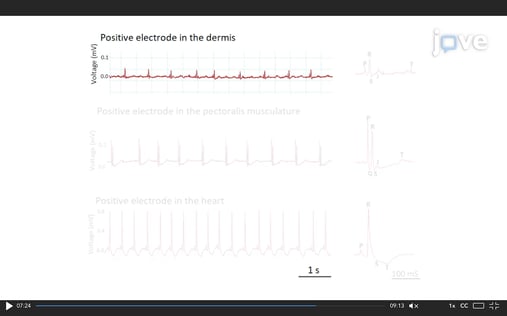As a model organism, zebrafish are wonderfully versatile — they are used in research areas ranging from toxicology to molecular genetics to behavior. To celebrate the zebrafish, we’ve brought together five recent video articles from JoVE Journal that demonstrate the various ways in which zebrafish can contribute to modern scientific research.
Note: Don’t forget to check out and request a free trial of the brand new Danio rerio collection within JoVE Encyclopedia of Experiments: Biology. This collection includes several videos showcasing basic and advanced research protocols for this model organism, which you can explore here>>
1. Using zebrafish to understand how environmental pollutants can affect the brain and nervous system

Publication name: Studying Neurobehavioral Effects of Environmental Pollutants on Zebrafish Larvae
This protocol tests how a chemical substance can affect three behaviors of zebrafish larvae: 1. Locomotion: the distance to which the larvae can swim. 2. Path angle: the angle of the path of motion, relative to the direction in which the larvae swim, 3. Social activity: the distance between different larvae. This experiment can help researchers assess the neurotoxicity of the chosen substance.
2. Visualizing the zebrafish heart

Publication name: In Vivo Surface Electrocardiography for Adult Zebrafish
As the authors of this protocol note in the introduction of their article, the electrical activity of the zebrafish heart is similar to that of the human heart — this makes the zebrafish a valuable model organism to better understand heart disorders or the cardiac effects of pharmaceutical substances. This protocol presents a novel method to record and interpret electrocardiograms for live, anesthetized zebrafish.
3. What do zebrafish want?

Publication name: A Standardized Protocol for Preference Testing to Assess Fish Welfare
What kinds of environments do animals in captivity, such as laboratory animals, prefer? In this protocol, the authors use a statistical test called Jacob’s preference index to test whether zebrafish prefer enriched environments (with objects such as artificial plants) to plain ones, and whether they prefer zones with a steady flow of water to those without. This method can also be adapted for use with other species, and to determine other habitat preferences.
4. How do drugs affect cells of the zebrafish (and human) immune system?

Publication name: Targeting Drugs to Larval Zebrafish Macrophages by Injecting Drug-Loaded Liposomes
Macrophages are cells that play an important role in the immune system: detecting and destroying pathogens. Key to developing drug treatments for inflammatory conditions such as autoimmunity is understanding how these drugs affect the behavior of macrophages. This protocol describes a relatively inexpensive method to target drugs to macrophages in zebrafish, a popular model organism for drug discovery research.
5. Understanding the zebrafish brain

Publication name: Visualizing the Developing Brain in Living Zebrafish using Brainbow and Time-lapse Confocal Imaging
How does the human nervous system develop at a cellular level? One way to approach this question is to examine the development of the zebrafish brain. The authors of this publication describe a protocol to study how cells differentiate to produce neurons in zebrafish embryos. Their protocol uses a process called Brainbow, which allows different clusters of cells to be coded with different colors — and produces visually stunning images in the process.


